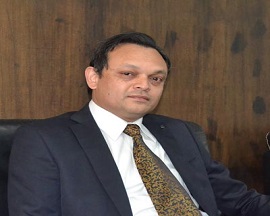
Prof. Y. P. Kosta
Title of the Plenary talk : MICRO STRIP ANTENNAS
Abstract: This presentation session will include introductory aspects of Microstrip Antennas such as radiation mechanism, antenna parameters, feeding techniques, and measurement aspects. This will be followed by a quick-way to estimate the resonant frequency of a microstrip antenna and arrive at its physical size. The know-how of the physical dimensions will function as plug-in to an antenna-software, and quick-start design and design optimization. Finally, towards the end, a new concept of liquid antennas will also be introduced to the participants. The liquid-antenna concept was first reported and introduce by the author(s) in 1989 in a regional conference at IIT, Roorkee. Liquid-Antenna’s was extensively introduced to the antenna community in an IEEE Antenna Conference as a publication in 2004. The title of the Research paper was “Liquid Antenna Systems”. This conference paper can easily be extracted by Google.
**Speaker Biography**
Professor Yogeshwar Kosta received his education in Science, Technology and Project Management from Dayalbaugh Educational Institute, Delhi University and Stanford University respectively. He earned his doctorate degree in telecommunication engineering (Antennas and Microwave Circuits) from Jabalpur University in 1998 while working as a scientist employed with the Indian Space Research Organization (SAC-ISRO) – Ahmedabad, Gujarat, India. His key engineering project assignments include, design, development and delivery of space qualified front-end receivers: KU-band communication payloads for the INSAT satellite project at SAC-ISRO, Govt. Of India, Ahmadabad, India. And design and development of MMIC and RFIC's for wireless applications at Teledyne Wireless, California, USA. During 2003 to 2010, Dr. Yogesh served as the Principal of Charotar Institute of Technology, and later (2008-10) as Dean Faculty of Engineering & Technology at Charotar University of Science and technology, at village Changa in Gujarat. Dr. Yogesh has been instrumental in pioneering and establishing the conceptual design structure for Marwadi University in terms of teaching, learning and evaluation as a Director. Dr. Yogesh has published more than 150+ research papers in the areas of science, technology, education, and management in conferences and journals of good standing. He has written and published 4 books on engineering and education. He is associated with IEEE since the last 13 years; he served as Chair, IEEE – Gujarat Section fortwo terms during 2015 and 2016. Presently he is a senior member of IEEE. He was the chapter chair of Humanitarian Technology and SMC of IEEE-Gujarat Section (2013 and 2014). He is an active member of many professional societies like IETE, IEEE, SMC-IEEE, CSI, ISTE, IE. He is a recipient of awards like Bharat Gaurav Award, Jewel of India Award, Lifetime Achievement Gold Medal Award, Indian Achievers Award, Kohinoor of India Award and Best Principal Award, GTU Innovation award, Best Research Paper Award, Best Creative Author Award, and array of social service appreciation and promotion recognitions.
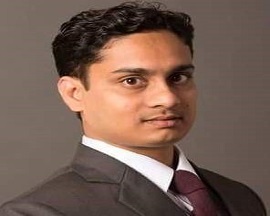
Dr. Santosh Kumar
Title : OPTICAL FIBER-BASED PLASMONIC BIOSENSOR FOR CANCER DETECTION
Abstract: Plasmonic fiber-optic biosensors utilise the flexibility and compactness of optical fibres in conjunction with the high sensitivity of nanomaterials to their surrounding medium to detect biological species such as cancer cells. Due to their small size, accuracy, low cost, and ability to perform remote and distributed sensing, plasmonic fiber-optic biosensors are promising alternatives to conventional cell detection methods. They have the potential to benefit clinical diagnostics, drug discovery, food process control, disease detection, and environmental monitoring. Recent advances in cancer cell detection have resulted in the development of multicore optical fiber-based biosensors. Six distinct normal and cancer cells were cultured and detected using a newly developed sensor. I'd like to discuss the fabrication of optical fibre plasmonic sensors and the establishment of a cell culture laboratory for the purpose of developing biosensors for the detection of cancer cells and other microorganisms. The discussion will benefit researchers working in optical fibre technology and biosensing.
**Speaker Biography**
Santosh Kumar received the Ph.D. degree from IIT (ISM) Dhanbad, Dhanbad, India. He is currently an Associate Professor with the School of Physics Science and Information Technology, Liaocheng University, Liaocheng, China. He has received an international travel grant from SERB-DST, Government of India, in 2016. He has guided seven M.Tech. dissertations and six Ph.D. candidates. He has published more than 150 research articles in national and international SCI journals and conferences. He has presented many articles at conferences held in Belgium and USA. He has published two books entitled Fibre Optic Communication: Optical Waveguides, Devices and Applications (University Press, 2017), India, and another book entitled 2D Materials for Surface Plasmon Resonance-Based Sensors (CRC Press, Taylor & Francis Group, 2021). He has reviewed more than 650 SCI journals of IEEE, Elsevier, Springer, OSA, SPIE, and Nature. His current research interests include optical fiber sensors, nano and biophotonics, terahertz sensing and spectroscopy, and waveguide and interferometer. He is a Life Fellow Member of the Optical Society of India (OSI) and a Senior Member of IEEE, OSA and SPIE. He is also a Traveling Lecturer of OSA. Recently, he has nominated for the Chief-Elect of OSA Optical Biosensors Technical Group. He has delivered many invited talks and serves as the session chair of IEEE conferences. He is also an Associate Editor of the ieee sensors journal, ieee access, ieee transactions on nanobioscience, and Biomedical Optics Express.
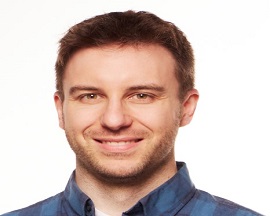
Dr. Sergi Abadal
Title : ATOWARDS THE INTERNET OF EVERYTHING WITH RECONFIGURABLE INTELLIGENT SURFACES AND GRAPHENE ANTENNAS
Abstract: Advances in RF design enable the implementation of wireless communications at the mmWave to THz bands, potentially leading to very high speeds while using tiny antennas and transceivers. This is expected to be translated into wireless networks with unprecedented levels of performance and efficiency, as well as the capacity to enter into uncharted territories such as inside the body or inside the chips, opening a plethora of disruptive applications in the context of the Internet of Everything. In this keynote, we will describe two groundbreaking technologies and their implications in wireless networks in 6G and beyond. On the one hand, we will review the concept of Reconfigurable Intelligent Surfaces (RIS), whose powerful control over electromagnetic waves allow them to modify the characteristics of the wireless channel in unprecedented and software-defined ways. This will be particularly critical in the THz band, since multiple phenomena impair propagation and limit the transmission distance in this part of the wireless spectrum. We will briefly revisit the fundamentals of RIS in the mmWave-THz bands, to then summarize the main applications in the contexts of 6G networks. On the other hand, we will introduce recent works on graphene antennas, whose plasmonic properties at THz frequencies lead to extreme levels of miniaturization and unprecedented tunability. We will finally describe Wireless Network-on-Chip (WNoC), a novel area-constrained application uniquely suited to the characteristics of the highly-integrated, ultra-high speed wireless communications enabled by graphene, and that shows potential for a paradigm shift in the field of computer architecture.
**Speaker Biography**
Dr. Sergi Abadal received the PhD in Computer Architecture from the Department of Computer Architecture, Universitat Politècnica de Catalunya (UPC), Barcelona, Spain, in July 2016. Previously, he had obtained the MSc and BSc in Telecommunication Engineering at UPC in 2011 and 2010, respectively. He has held several visiting positions in Georgia Tech in 2009, University of Illinois Urbana-Champaign in 2015 and 2017, and the Foundation of Research and Technology – Hellas in 2018. Currently, he is Coordinator of the FET-OPEN WIPLASH project and also works in a NEC Laboratories Europe research fellowship. He is Area Editor of the Nano Communication Networks (Elsevier) Journal, has served as TPC member of more than 15 conferences, and has published over 75 articles in top-tier journals and conferences. Abadal was the recipient of the Nano Communication Networks Young Investigator in 2019, UPC Outstanding Thesis award in 2016, the INTEL Doctoral Fellowship in 2013, Accenture Award for MSc students in 2012. His current research interests are in the areas of chip-scale wireless communications, including channel modeling and protocol design, and the application of these techniques for the creation of next-generation computer architectures.
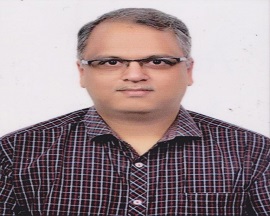
Dr. Ashwin Kothari
Title : RECENT TRENDS IN COMMUNICATION ENGINEERING AND ISSUES AND CHALLENGES THEREOF
Abstract:Consistent demand of high performance and reliability, spectrum efficacy, High Data Speed and Environment friendly technology with sustainability has made communication engineering to undergo a paradigm shift or evolution. Tremendous research efforts pursued all over the world have come up with new and recent methodologies or techniques to achieve desired goals. This has resulted in many interesting problem statements or research fields open for the researchers to be pursued worldwide. Such efforts demand amalgamation of approaches based on interdisciplinary fields which further results in issues to be addressed related to compliance at various levels. A serious attention must be given to the needs of design of newer standards, protocols and algorithms not only for implementation of these newer technologies but also for their testing and validation. My talk would be covering an overview of such trends and issues and challenges related to them.
**Speaker Biography**
Dr. Ashwin Kothari received his PhD in 2010 from VNIT, Nagpur. He is currently working as an Associate Professor in Electronics and Communication Engineering Department of Visvesvaraya National Institute of Technology and also has charge of Associate Dean at IIIT Nagpur (Indian Institute of Information Technology), Nagpur, India. He is also one of the coordinators for Center of Excellence of COMMBEDDED SYSTEMS: Hybridization of Communications and Embedded Systems established as World Bank assisted project of TEQIP 1.2.1. Rough Sets, Commbedded systems, Communication, Signal Processing and Antennas are his fields of interests. Applications of Rough Set based signal processing is his special interest. He has authored around 30 publications and have contributed 03 book chapters for reputed publications in last five years. He has 21 years of experience in teaching and research. He has produced 6 PhDs so far and currently guiding 05 PhDs. Dr. Ashwin has visited UC Barkley, University of Akron, NJIT, UT Austin (All USA). University of Nagoya Japan. He has been a resource person for many seminars, invited talks and workshops etc. He has 8 patents filed to his credit so far. He has worked and also currently working on many industry collaborative projects with indutries like Tektronix, Mathworks, NI, HCIT, L&T Metro, SAMEER Mumbai etc. Dr. Ashwin is also working on various projects of socio-economic relevance with many social organizations like Gorakshan Sabha-Nagpur, Blind Relief Association-Nagpur, Saraswat Mandal-Nagpur and Rotary Club-Tiger Capital-Nagpur under various capacities. He is a member of IEEE, IETE and ISTE and International Rough Set Society (IRSS).
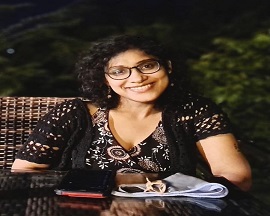
Ms. Neha Raj
Title : ELECTRONIC TRENDS OF UPCOMING INTEGRATED TECHNOLOGY
Abstract: Semiconductor industry makes modern life possible. Without semiconductor chips, smartphones, computers, health care equipment, military devices, transportation, and thousands of other devices could not function. Thus far, the industry has managed to consistently provide more powerful integrated chips in response to demand, allowing electronic innovations to develop at a staggering rate. That said, the increasing demands for smaller, faster semiconductor chips raises an important question: Is the system scaling made possible by Moore’s Law reaching its limits? And if so, how can semiconductor manufacturers surmount this technological roadblock? At some point, the industry will reach the physical limitations of existing semiconductor materials, making it impossible to continue doubling transistors indefinitely. This limit is expected to be reached soon and could have grave implications for the future of AI and high-performance computing.
Two interconnected solutions to overcome these obstacles to Moore’s Law: More Moore and More than Moore. More Moore, recommends reducing chip size and increasing logic and memory capabilities through improvements in logic, dynamic random-access memory, and nonvolatile memory systems, pushing chip performance beyond existing complementary metal-oxide semiconductor limits. And More than Moore recommends the growth of silicon technologies that do not scale with Moore’s Law, such as radio frequency, solid-state lighting, system in package, and organic technology.The future technology challenges are the innovations and effective integrations of above solutions focusing mainly on digital, non-digital function and heterogeneous integration.
**Speaker Biography**
Ms. Neha Raj has been in the semi-conductor industry for more than 15 years. Neha, with expertise in IP design and certification played a vital role in regulating and governing IP lifecycle along with motivating cross-functional and multi-cultural teams to achieve challenging business goals. She started off her career with Wipro Technologies, India as Project engineer, developing and supporting customized layouts for worldwide analog, memory and ASIC product groups. She worked on Library development and Characterization of Standard cells as Senior Design Engineer and slowly progressed as Principle engineer to led Silicon Certification Team for NXP, India. Later joined Global Foundries, Singapore as Member of Technical Staff, where she led IP Lifecycle Management team, responsible for preservation of capital investment for IP lifecycle. Organizational responsibilities include strategic planning, project delivery, leadership development and organizational growth. Played multiple profiles as well as serve many eco-system partners spanning across R & D, Support, Foundry Relations and portfolio.
Education : Executive MBA from IIM Calcutta in Operations
Master of Technology in VLSI design (CDAC, Noida affiliated to GGSIPU, Delhi University)
Bachelor’s degree in Electronics and Communication Engineering (UPTEC, Lucknow University)
Volunteer work - Pro bono work for Nai Disha, Noida and AAYS society, Singapore to provide personal and educational support for below poverty line students.
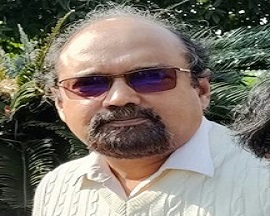
Dr. Devesh C Jinwala
Title : ADVERSARIAL MACHINE LEARNING: AN INTRODUCTION AND CASE STUDIES
Abstract: In this talk, we shall focus on understanding how the machine learning (ML) techniques can be and are being exploited to orchestrate security attacks on the Machine learning based solutions. Recently, Google, Microsoft and IBM have signaled, focussed initiatives to secure their ML systems. Prior to that there have been several published reports from the leading industry market research firms, too that have cautioned the designers and the developers to safeguard against the risks of data corruption, model theft, and adversarial samples. In this talk after an introduction to how the taxonomy of the role of Machine Learning in the Information Security in general, several examples of the adversarial attacks on the machine learning solutions shall be presented. In addition, an attempt would also be made to understand the extent to which organizations across
different industries are protecting their ML systems from attacks, detecting adversarial manipulation and to responding to attacks on their ML systems.
**Speaker Biography**
Dr. Devesh C Jinwala has done Ph D in Computer Engineering, having carried out his research work at SVNIT, Surat, in close association with Space Application Center, Indian Space Research Organization, Ahmedabad. Dr. Jinwala is Professor in Computer Engineering at the Department of Computer Engineering, Sardar Vallabhbhai National Institute of Technology (SVNIT), Surat, India. He is also acting as Adjunct Professor in Computer Science and Engineering and as Dean (Faculty Affairs) at IIT Jammu. He has also shouldered numerous administrative responsibilities including being Dean (Research & Consultancy), Dean (Faculty Welfare) at SVNIT, Head (Computer Science and Engineering) at IIT Jammu, Head (Department of Computer Engineering) at SVNIT and others. Dr Jinwala has carried out successfully three research projects viz. one funded under the RESPOND program of ISRO on Design and Implementation of Link Layer Security Architecture for Wireless Sensor Networks , second funded by the Department of Electronics and Information Technology, Ministry of Communications and Information Technology, Govt of India on A Secure Data Aggregation System and an Intrusion Detection Systems for Wireless Sensor Networks and the third one funded by the Gujarat Council of Science and Technology (GUJCOST) on Investigating Anti-Replay algorithm for link layer security architecture in wireless sensor networks .His research focus mainly is in Information Security, Privacy Issues in General and in Resource Constrained Environments, Security and Privacy Issues in Searchable Encryption in Cloud. However, He also dabbles in Software Requirements and Formal Specifications and in Machine Learning in Security and Privacy.
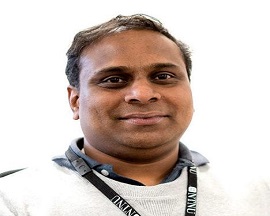
Dr. Raghvendra Ramachandra
Title : FACE MORPHING ATTACKS: VULNERABILITY AND DETECTION
Abstract: morphing is the process of seamlessly combining the face images from different data subjects to generate the composite (or morphing) image that can share the facial characteristics from the contributing data subjects. Face morphing attacks have shown high vulnerability on the commercial face recognition system. In this keynote, deep learning-based based morphed attack generation will be presented. Further, 3D face morphing generation will also be discussed. Lastly, part of the talk will focus on the detection of face morphing attacks.
**Speaker Biography**
Dr. Raghvendra Ramachandra received the Ph.D. degree in computer science and technology from the University of Mysore, Mysore, India, the Institute Telecom, and Telecom Sudparis, Evry, France (carried out as a collaborative work) in 2010. He is currently appointed as a Full Professor with the Institute of Information Security and Communication Technology (IIK), Norwegian University of Science and Technology, Gjovik, Norway. He was a Researcher with the Istituto Italiano di Tecnologia, Genoa, Italy, where he worked with video surveillance and social signal processing. He has authored several papers and is a reviewer for several international conferences and journals. He also holds several patents in biometric presentation attack detection and morphing attack detection. His main research interests include deep learning, machine learning, data fusion schemes, and image/video processing, with applications to biometrics, multimodal biometric fusion, human behavior analysis, and crowd behavior analysis. He has received several best paper awards. He was/is also involved in various conference organizing and program committees and serving as an associate editor for various journals. He was/is participating (as PI/Co-PI/contributor) in several EU projects, IARPA USA and other national projects. He has served as an editor for ISO/IEC 24722 standards on multimodal biometrics and an active contributor for ISO/IEC SC 37 standards on biometrics.